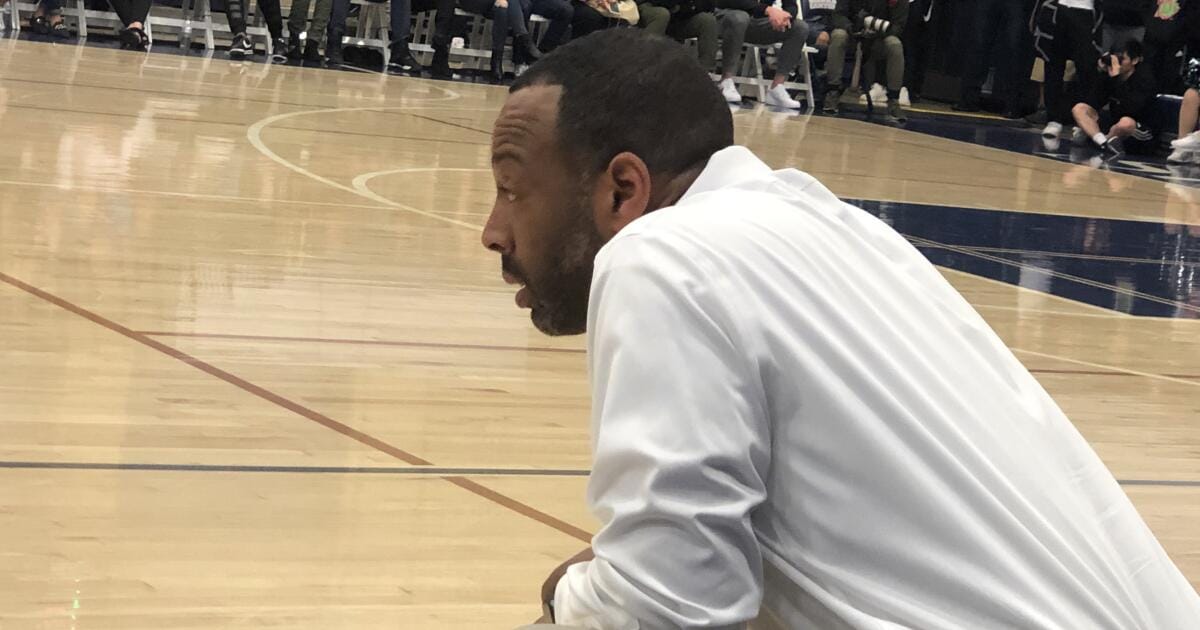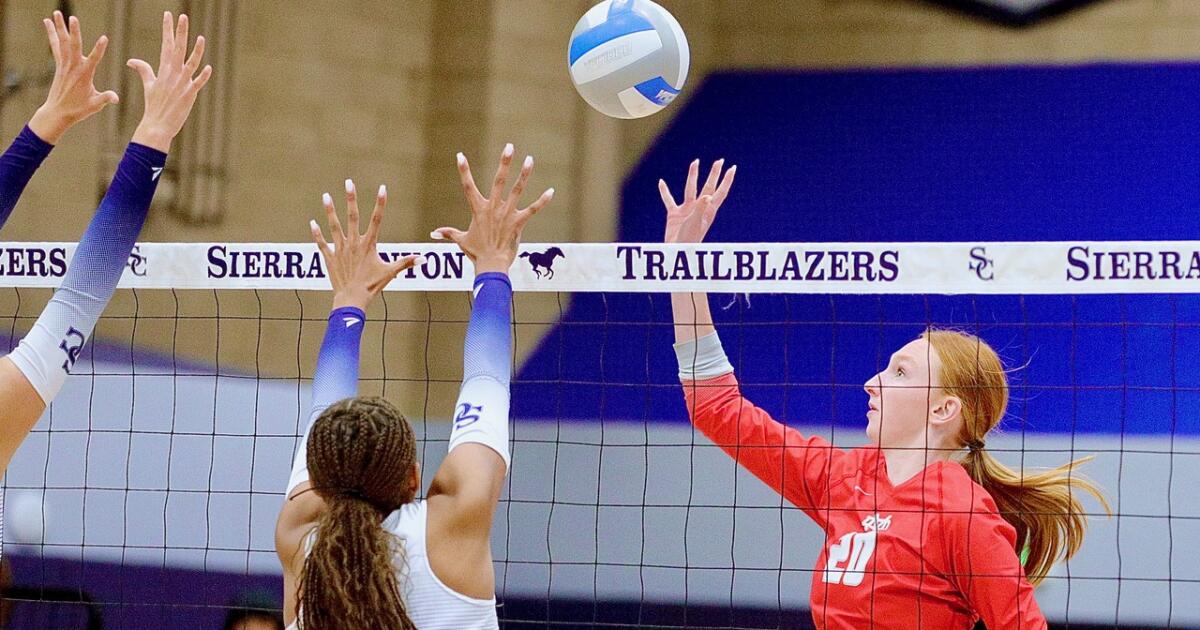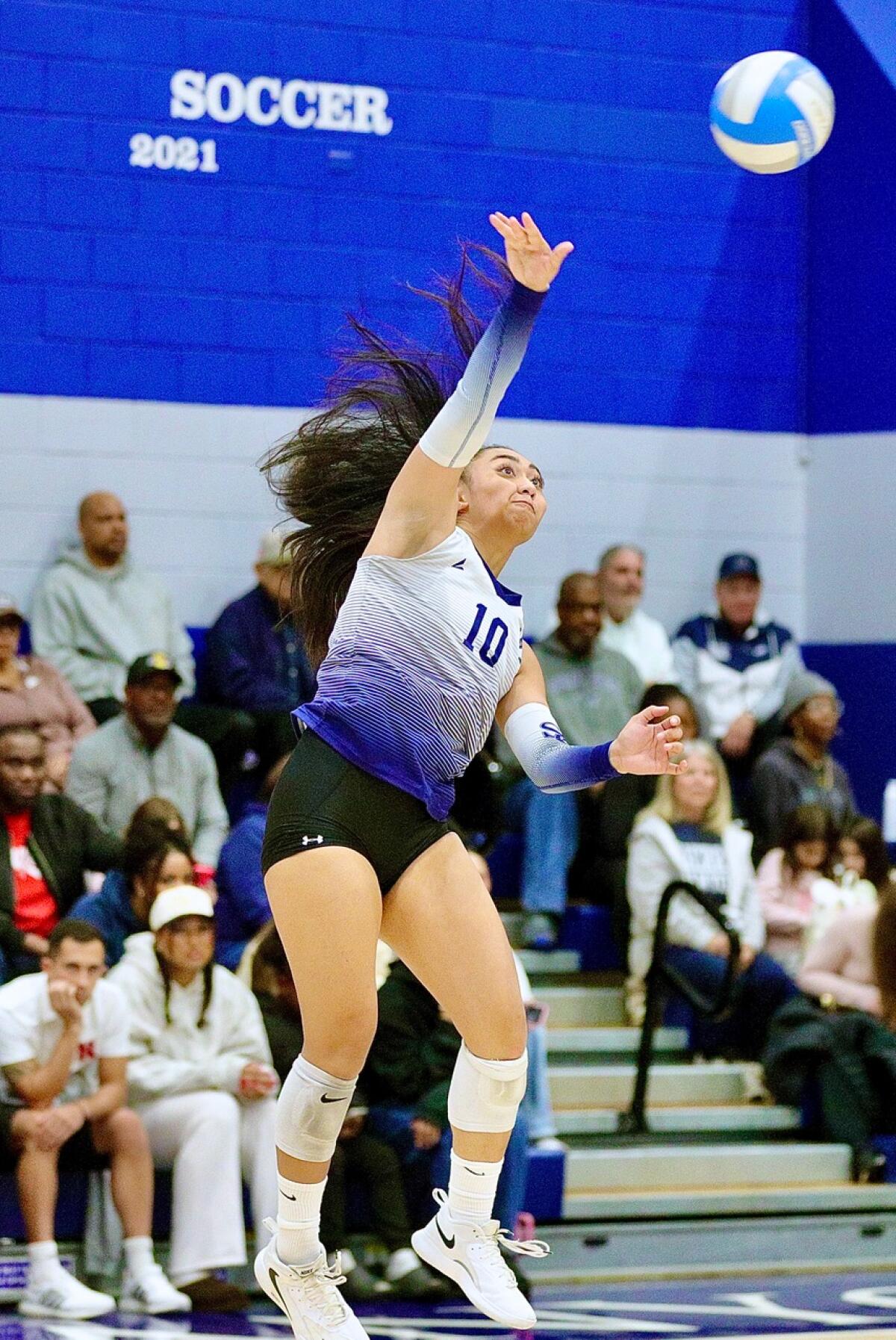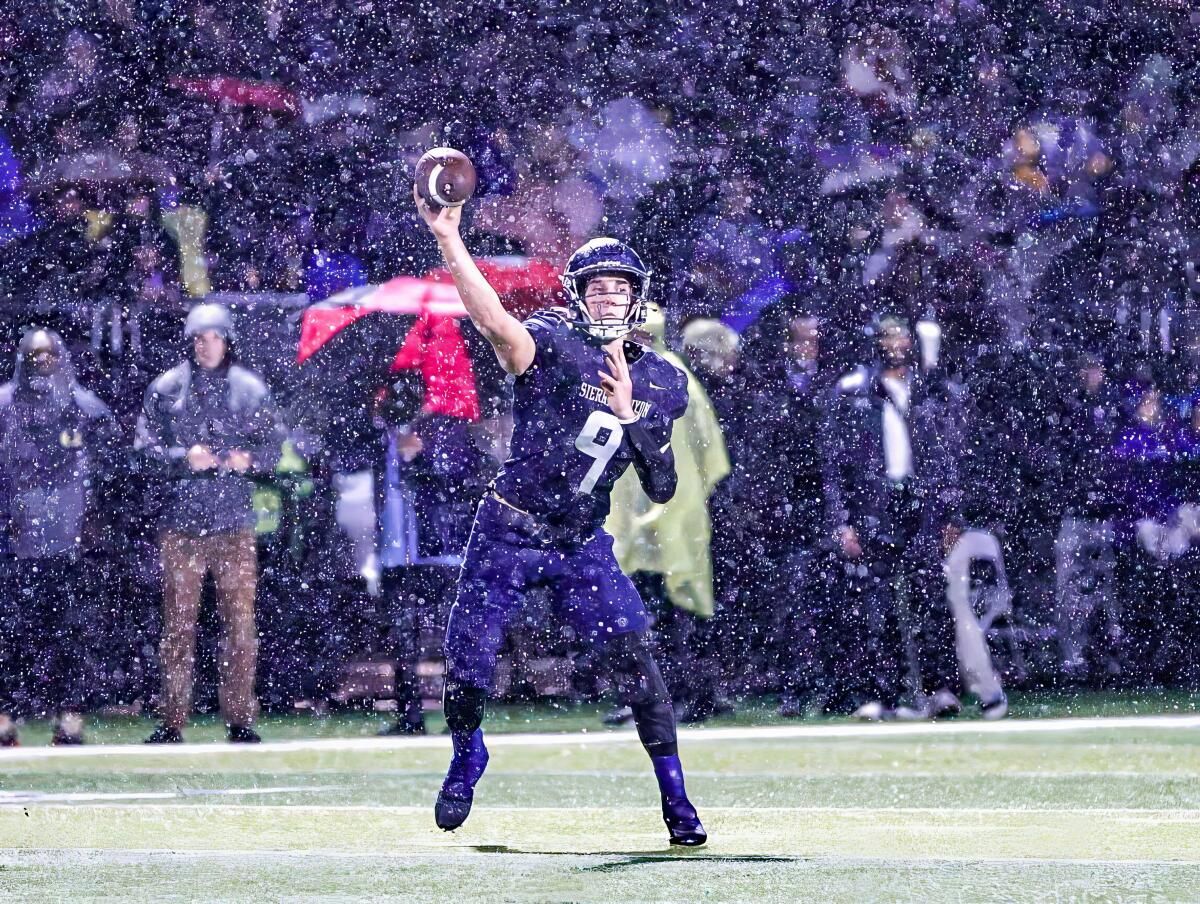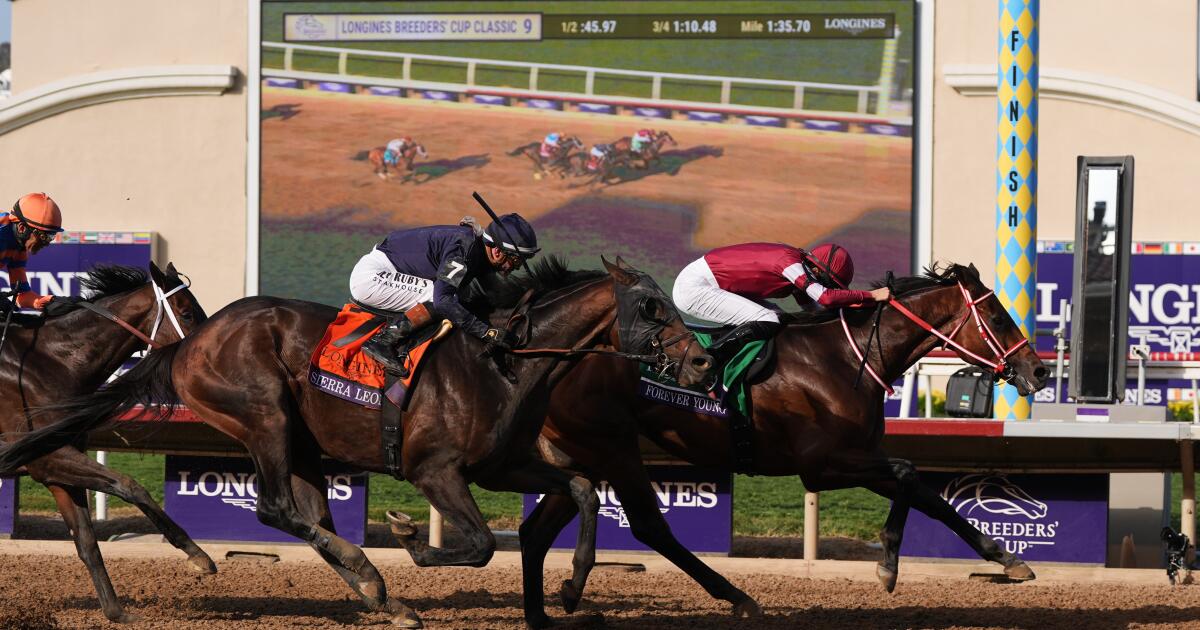Japanese horse racing has been on the precipice of breaking through on the U.S. scene. It seemed like it was almost there in 2021 when it won three Breeders’ Cup races. But after that it leveled off.
Through 10 races at this year’s Breeders’ Cup, horses from Japan underperformed. But in the 11th, the most important race in the two-day event, the breakthrough became official when Forever Young held off Sierra Leone, last year’s winner, to win the $7-million Breeders’ Cup Classic by a half-length.
The last time we saw Forever Young in this country was a year ago when the 4-year-old colt finished third in the Classic. Before that, he was third in the Kentucky Derby by a whisker while being on the receiving end of some bumping down the stretch by Sierra Leone. Without that he might have been victorious in a race that was won by Mystik Dan.
The commonality between the 2021 and 2025 Breeders’ Cup days was that both were run at Del Mar.
Forever Young was almost the victim of some legal chicanery on Saturday as trainer Chad Brown entered a horse — called a rabbit — with little chance to win so that he could set a fast pace. Sierra Leone, also trained by Brown, needs a fast pace to weaken the other horses, which would benefit Sierra Leone’s late running style.
But this time, Forever Young overcame all the obstacles thrown at him. He ran a very tactical race being placed close to the lead and never farther back than third.
Forever Young paid $9.00 to win. He was followed in order by Sierra Leone, Fierceness, Journalism, Mindframe, Baeza, Nevada Beach, Antiquarian and Contrary Thinking, who was the rabbit in the 1 1/4- mile race.
It was the third Breeders’ Cup win for trainer Yoshito Yahagi. When asked if this was his most satisfying win, Yahagi said, through a translator: “I will never, ever get satisfied until I get retired as a trainer.”
Forever Young was the third foreign horse to win the Classic, joining Argentine-bred Invasor in 2006 and Irish-bred Black Tie Affair in 1991.
“So last time here, the horse was 75% conditioned,” Yahagi said. “And this time we create 100% condition. Forever Young is an amazing horse.”
The winning jockey was Ryusei Sakai.
“We got the No. 1 in America,” Yahagi said to NBC.
The Classic lost a lot of luster when the favorite, Sovereignty, the winner of the Kentucky Derby and Belmont Stakes, was scratched earlier in the week when he spiked a fever. Sovereignty was the top-rated horse in the country and a possible horse-of-the-year winner. Many were hoping for a rematch with Journalism, who finished second in both those races and won the Preakness, which Sovereignty did not run in.
Trainer Bill Mott only brought two horses to the Breeders’ Cup, Sovereignty and Scylla. While Sovereignty didn’t make the starting gate on Saturday, Scylla ($17.20 to win) sure did, winning the biggest race of the year for female horses, the $2-million Distaff.
“It’s certainly difficult to see what happened to Sovereignty,” Mott said. “I think everybody that’s connected [with this sport] has been through it and we knew when it happened, he wouldn’t be able to compete and not at the level that he would need to. And it seems as though he’s recovering well but he’s really not the story here.
“I mean this one is about Scylla and about Junior [Alvarado, his jockey] and the Juddmonte connections.”
Alvarado took her to the front and never looked back, winning the 1 1/8-mile race by 5 1/2 lengths. Nitrogen was second and Regaled finished third. Favorite Seismic Beauty contended early but then faded to 12th in the 13-horse field.
The second richest race on the card, the $5-million Turf, was supposed be a matchup of two-time winner Rebel’s Romance and Minnie Hauk, who had five wins and two seconds in seven starts. They ran together for most of the 1 1/2-mile race but long shot Ethical Diamond started rolling in the top of the stretch and cruised to a 1 1/4-length win. Rebel’s Romance was second.
The Irish-bred Ethical Diamond, trained by William Mullins and ridden by Dylan Browne McMonagle, paid $57.40 to win.
The first Breeders’ Cup race of the day, the $1-million Filly & Mare Sprint, became less interesting when two of the favorites, Sweet Azteca (2-1 morning line) and Tamara (7-2), were scratched by the veterinarian. There was a third scratch that took the field down to seven.
Bob Baffert had three of the horses in the race, including Splendora, who won in dominating fashion by 4 3/4 lengths and paid $7.80. He was midpack until the far turn of the seven-furlong race before jockey Flavien Prat let him loose in the stretch.
It was Baffert’s 20th Breeders’ Cup win, tying him for second with the late Wayne Lukas. Aidan O’Brien won his 21st Breeders’ Cup race on Friday.
“[Lukas] changed every industry for the better,” Baffert said. “He brought elegance to the game. … To be part of it and then to tie him, it’s an honor for me. … I still miss him. I loved having conversations with him. It’s an honor to tie him.”
Shisospicy ($12.60) broke on top and held the lead to the finish to win the $1-million Turf Sprint, which was ran at five furlongs. The 3-year-old filly is trained by Jose Francisco D’Angelo and was ridden by Irad Ortiz, Jr., who picked up his 22nd Cup victory.
She’s Quality was eased shortly out of the gate in the Turf Sprint by jockey Colin Keane and walked onto the equine ambulance. She was transported to an equine hospital and is back in her barn being monitored.
Ortiz picked up his 23rd win in the next race when he won the $2-million Sprint aboard Bentornato. It was also the second straight victory for D’Angelo. Bentornato broke on top and was never headed in the six-furlong race. It was only his second race of the year for the 4-year-old ridgling. Bentornato finished second in last year’s Sprint, losing to Straight No Chaser, who finished seventh on Saturday.
There were three additional Breeders’ Cup races after the Classic, the turf Mile, Dirt Mile and Filly & Mare Turf.
